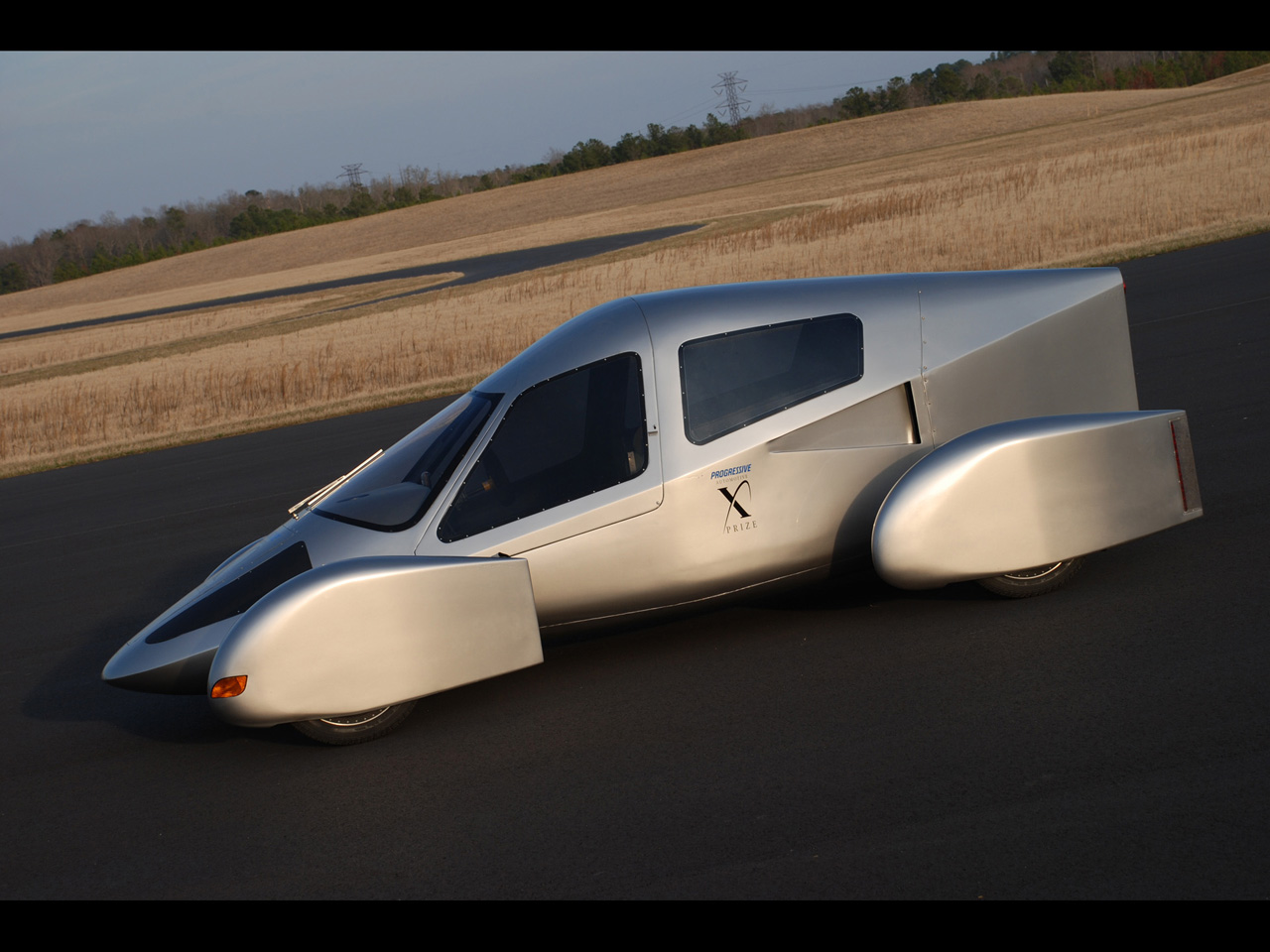2010 Edison2 Very Light Car
|
Price |
-- |
Production |
-- | ||
|
Engine |
-- |
Weight |
-- | ||
|
Aspiration |
-- |
Torque |
-- | ||
|
HP |
-- |
HP/Weight |
-- | ||
|
HP/Liter |
-- |
1/4 mile |
-- | ||
|
0-62 mph |
-- |
Top Speed |
-- |
(from Edison2 Press Release) Edison2 Wins $5 Million Mainstream class Prize in the Progressive Insurance Automotive X PRIZE
Kuttner sees new market segment of light‐weight, aerodynamic cars
Washington DC –
September, 16, 2010: Edison2, a Lynchburg, Virginia, automotive
innovation
company led by Charlottesville developer and racing entrepreneur
Oliver Kuttner, was
presented a $5 million prize at the Progressive Insurance Automotive
X PRIZE awards ceremony
today at the Historical Society of Washington, DC. Edison2's Very
Light Cars – unprecedented
combinations of light weight and low aerodynamic drag – were the
only vehicles to survive the
grueling Mainstream class of the X PRIZE, in which cars were
required to seat 4 passengers, go
at least 200 miles on a tank or charge, and meet stringent
performance, handling and emissions
standards, all while achieving over 100 MPGe.
"The X Prize has shown
that business as usual will not solve our dependence on foreign oil.
All
of the teams here today – the X Prize finalists – are departures
from the ordinary”.
“Facts are stubborn
things” continued Kuttner. “We named our company Edison2 because we
accepted the conventional wisdom, that an electric or hybrid drive
is the key to efficiency. But
our analysis showed that the only two absolute virtues in auto
efficiency are light weight and
low aerodynamic drag. So we avoided the hundreds and hundreds of
pounds of batteries
needed for an electric and chose a conventional internal combustion
engine running on E85”.
For the competition Kuttner assembled a top‐tier team of racing and
aerospace engineers,
designers and mechanics, including Chief of Design Ron Mathis,
Aerodynamicist Barnaby
Wainfan and Crew Chief Peter Kaczmar.
Mathis, who came to
Edison2 from Audi Sport North America, was responsible for the
groundup
design of the Very Light Car. “Almost all components of the Very
Light Car were re‐designed
with an eye toward function, strength and light weight” said Mathis.
He credited racing
experience and knowledge for enhancing safety in a low‐mass car:
“The same design principles
that allow a driver to walk away from a high‐speed crash can make a
light car a safe car.”
Kuttner believes the adoption of Very Light Car principles is a
necessity if America is to address
energy independence and climate change. “We need cars that simply
take less energy to push,
whether electric, hybrid, ethanol or gasoline.” But he also sees the
development of a new
market segment in the auto industry: lightweight, safe, aerodynamic
cars, with the US as the
focal point.
Currently Edison2 is
actively seeking a new round of private financing as well as
bolstering
research and development capacity through federal and state funding
opportunities. Kuttner is
considering the purchase of a large facility to create a “technology
cluster” surrounding the
development of the next generation of the Very Light Car and serving
as a launching point for
manufacturing.
“The X Prize is only the
beginning.” said Kuttner. “We need to demonstrate that low‐mass cars
can be safe and meet FMVss safety standards. We need to show how our
Light Car principles
can dramatically improve efficiency for electric, hybrid, diesel and
natural gas systems. And we
need to create cars to fit the wide needs of consumers: SUV’s,
family sedans, sports and utility
models – all light, aerodynamic, safe and incredibly efficient.”



